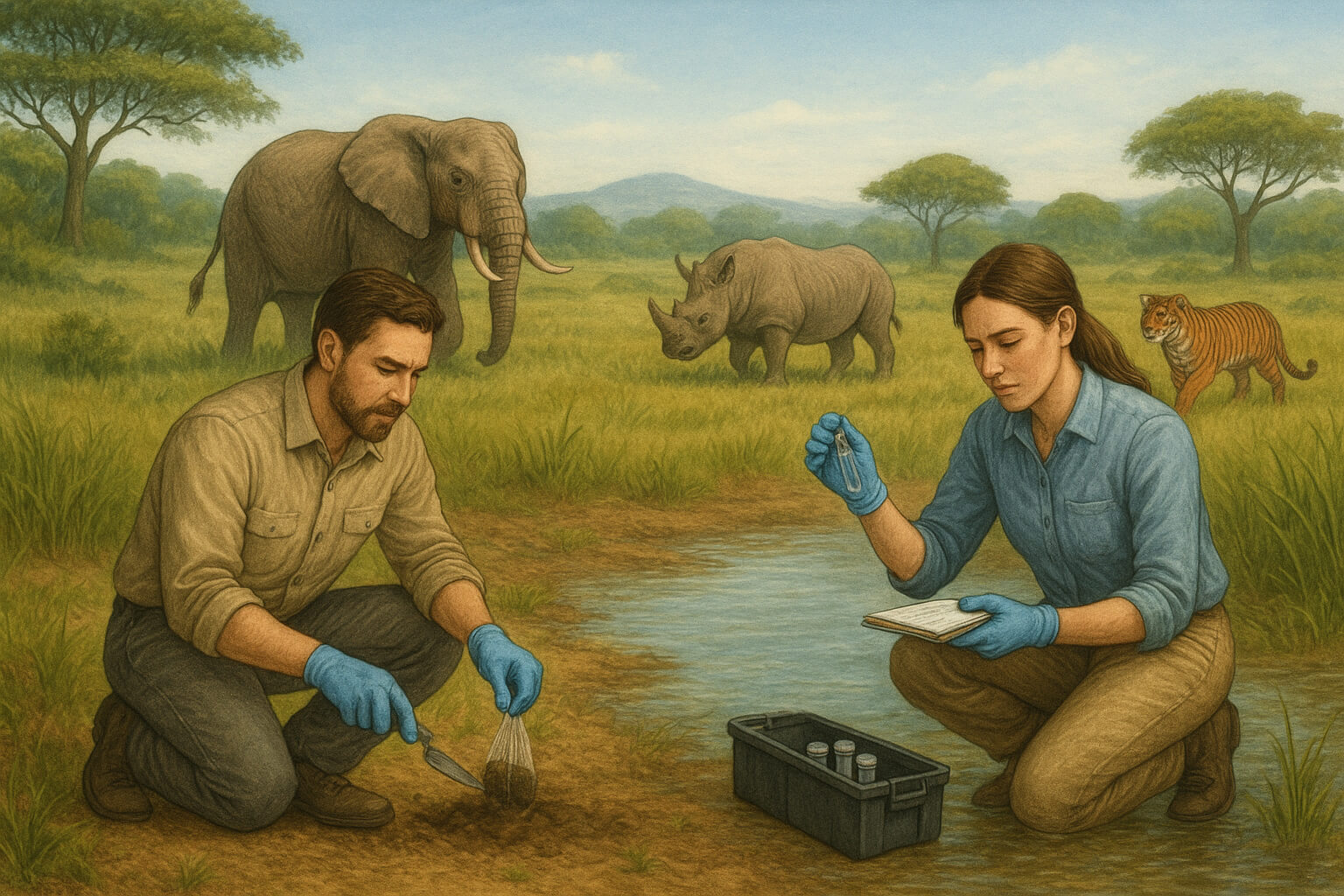September 08, 2025

Wildlife conservation has grown far beyond traditional practices like habitat protection and anti-poaching patrols. In today’s age of precision science, DNA analysis has emerged as one of the most powerful tools in protecting biodiversity. It's helping scientists and conservationists not only understand endangered species better but also intervene more effectively to ensure their survival.
From identifying elusive species to tracking down poachers and designing genetically informed breeding programs, DNA is reshaping the future of wildlife protection in remarkable ways.
“If we can name it, we can save it.”
One of the earliest and most critical roles of DNA in conservation is accurate species identification. Many species look nearly identical but are genetically distinct. Without DNA, these differences can go unnoticed, leading to inadequate or misdirected protection efforts.
This precise identification helps determine which animals are most at risk and allows conservationists to target their efforts effectively.
Related: Why Biodiversity Matters
“DNA doesn’t lie—and it doesn’t need a passport.”
The illegal wildlife trade is a multi-billion-dollar industry threatening countless species worldwide. From ivory to pangolin scales to exotic pets, the trade relies on anonymity. DNA forensics is cracking open this hidden world.
A landmark example: DNA analysis of ivory seizures helped link products to specific elephant populations in Central Africa, prompting stronger protection measures in those regions.
Learn more: TRAFFIC – Wildlife Trade Monitoring Network
“Saving a species is not just about numbers—it’s about genetics.”
When a species becomes critically endangered, breeding programs can prevent extinction. But inbreeding—mating between close relatives—can lead to serious genetic problems, from lower fertility to birth defects. DNA helps conservationists:
An example of success: The black-footed ferret—once thought extinct—was brought back from just seven individuals. Genetic management helped rebuild the population, which now numbers in the hundreds.
Related read: How Medical Research is Changing Lives
“What animals leave behind tells us where they are.”
A groundbreaking method in modern ecology is environmental DNA (eDNA)—traces of genetic material left in the environment via skin, fur, feces, saliva, or urine. Scientists can collect soil, water, or even air samples, extract DNA, and detect which species are present—without ever seeing or touching the animals.
This is especially valuable for tracking endangered species or monitoring changes due to climate impacts.
Read more: National Geographic – eDNA and Wildlife
“Diversity is nature’s insurance policy.”
Just like healthy ecosystems rely on species diversity, species themselves rely on genetic diversity. A genetically diverse population is more resilient to:
DNA analysis allows conservationists to assess the genetic health of populations and take steps to protect it. This could mean relocating individuals, mixing populations, or adjusting breeding strategies.
Protecting genetic diversity isn’t just about saving species today—it’s about giving them a fighting chance tomorrow.
As threats to wildlife escalate—from climate change to deforestation to international trafficking—conservation needs tools that are precise, efficient, and science-driven. DNA offers exactly that.
Whether it's used to prevent poaching, correct taxonomies, enhance breeding, or monitor remote populations, DNA is no longer just a research tool. It's a life-saving lifeline for thousands of species on the brink.
And with costs of genetic testing decreasing and techniques like CRISPR and genome sequencing advancing rapidly, the potential to restore, protect, and preserve wildlife through DNA will only grow stronger in the years ahead.
You don’t need to be a scientist to support this critical work. Here’s how you can make a difference:
DNA is a powerful storyteller—it reveals where species come from, what challenges they face, and how best we can help them survive. By understanding and harnessing this invisible code, we’re not just unlocking the secrets of nature—we’re giving endangered animals a future.
When conservation meets genetics, it’s more than science. It’s hope, precision, and action—rolled into one.
Stay up to date with the latest tips, expert insights, product reviews, and step-by-step guides to help you grow, create, and succeed—no matter your industry or passion.